The Evolution of Popular Music in the UK: 1960s to 2010s
Info: 8484 words (34 pages) Dissertation
Published: 19th Nov 2021
Introduction
The music is a monument to the culture of the United Kingdom. If someone were asked the first thing they would think if he were told the words UK or England, music would be one of his first answers, at the same level as Queen Elizabeth II or Brexit. Recent British bands and artists are widely known today around the world, but the more “old” ones are not forgotten, they are as well known if not more.
In my work, I will go back to the 1960s, starting with the Beatles, a classic English rock band known around the world for their catchy songs. I will continue my exploration of music through several movements like the punk one and Britpop one to finally finish with the new generation of artists, very well represented by Ed Sheeran, who is also known around the world for his work as a singer-songwriter.
The United Kingdom is a country of “legend” for musicians, because when bands and artists like Pink Floyd, The Beatles, Eric Clapton or Amy Winehouse, who are internationally known for their talent, emerge in a same country, one can think that it is the kingdom of musicians and music lovers.
This project focuses on the evolution of popular musical styles and to some extent of the ideas and fashions associated with certain bands or periods. Constantly evolving due to changes in taste and technology there is also a sense in which British popular music is parasitic on its own book catalogue and history re-cycling sounds as influence over time.
The Russian Literary critic Shklovsky[1] identified “defamiliarization” as the artistic technique of presenting to audiences common things in an unfamiliar or strange way to enhance perception of the familiar. Creative deformation of past traditions in this sense re-awaken and re-invent forms for each new generation. Hence Oasis deform the music of The Beatles and Ed Sheeran deforms Oasis and The Beatles.
In this project, I try to show that British music has always been popular and has always been a reference in the music industry over the years and the different developments of the latter. This work is a reminder of what music was like for Great Britain and its society, a revisit of years that we maybe not remember or very little.
1960s
Introduction to the music of the 1960s
In the 1950s, the United Kingdom was well placed to receive rock ‘n’ roll and American culture. They share the same language, they were exposed to American culture when troops were resident during the Second World War, and shared many social developments, including the emergence of cultures such as Teddy Boys. (Teddy Boys, from the 1950s British subculture, was made up of young English people the “Teddy Boys” wearing Edwardian-inspired clothes and often considered violent and harsh). At this period Rock was very present in the British culture.
Initially, young idols were inspired themselves by American rock stars (Elvis Presley or Little Richard) and then derivative artists began to appear, like Wee Willie Harris and Tommy Steele. But it was in the year 1958 that the first “real” British piece of rock ‘n’ roll was produced by Cliff Richards, “Move It”. He reached the second place in the charts and became a star, bringing others artists into the spotlight. The TV show “Oh Boy” launched artists like Marty Wilde and Adam Faith while Joe Brown and Johnny Kidd & The Pirates, especially with “Shakin ‘All Over”, become rock’ n ‘roll standards. It was a really big change compared to the beginning of the 20th century. Young people wanted to change the world with their music to express themselves. The Beatles were one of the most famous band of this decade (1960s), they spoke about several subjects and often very different like politics and love (not in the same song). Their music was not centred only on rock but on psychedelic and folk too, for many songs the music genre is difficult to define.
Rock
Rock is a state of mind, a free thought. Rock is a bit rebellious, a bit borderline. It has allowed new generations to sing their ideals and express their need of freedom and revolution. Being rock, it is not be afraid to say what it thinks. The period of the 20th century is the continuation of the rock debut in the United States in the UK.
The Beatles
The Beatles were a British pop and rock band from Liverpool, composed of John Lennon, Paul McCartney, George Harrison and Ringo Starr.
They are considered the most popular and influential rock band in history. One of their biggest successes was to have five of their songs in the Billboard Hot 100 singles chart of april 1964, the five of them at the top of the singles chart. In addition to these five there are seven other pieces which are also present in the top 100.[2] In ten years of existence and only eight years of record career (from 1962 to 1970), the Beatles recorded twelve original albums and composed more than 200 songs. Initially influenced by several musical genres (skiffle, beat music and rock ‘n’ roll of the 1950s), they quickly changed their musical style, addressing genres as varied as pop, Indian music, psychedelic rock and hard rock.
Their technical and musical experiments, their worldwide popularity and their growing political consciousness over the course of their careers extended the Beatles’ influence beyond music to the social and cultural revolutions of their time. The Beatles were not only fantastic musicians but also good song writers. It has even been said by a music critic of The Observer (Sunday newspaper) that : «If there is still any doubt that Lennon and McCartney are the greatest song writers since Schubert, then next Friday – with the publication of the new Beatles double LP – should surely see the last vestiges of cultural snobbery and bourgeois prejudice swept away in a deluge of joyful music-making, which only the ignorant will not hear and only the deaf will not acknowledge.»[3].
The Beatles’ members fed on various musical influences, starting with Elvis Presley’s American rock’n’roll, Carl Perkins, Chuck Berry and Little Richard.
Inspired to make music with Lonnie Donegan and the skiffle, the Beatles started in a beat music style, typical of 1950s rock’n’roll, helping to forge the Merseybeat (named after the Mersey River in Liverpool). Over the course of their career, the Beatles explored many genres and musical sub-genres, expanding the boundaries of the notion of pop music. The door opened wide when this “boy band” published “Yesterday” accompanied by a string quartet that becames an intergenerational success.
Several songs are at the crossroads of several influences. A remarkable example is the song “You Know My Name” (Look Up the Number) which mixes rock, samba and jazz. The song “Till There Was You”, taken from a musical and placed on their second album, also announces their refusal to lock themselves in a genre. This desire not to belong to a specific genre is visible in the rhymes “All Together Now” and “Yellow Submarine” that do not belong to any defined genre.
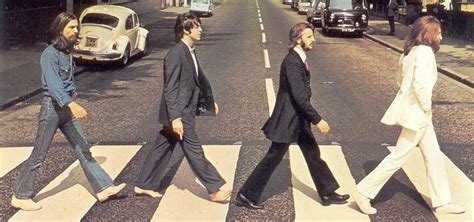
1970s
Introduction to the music of the 1970s
It was new forms of music, based on blues rock, folk rock and psychedelic rock from the late 60s that built the popular music of the 70s. Several kinds of music were created at this time. World music began to influence Britain. American styles like punk rock increased the popularity of the British punk scene. Punk music put pop and rock to the background by creating new wave bands and post punk bands during the late 70s and early 80s. Rock and pop did not stop developing but instead these two kinds of music developed in parallel.
Punk movement
«Punk changed everything. Not just our trousers. Our lives. Everyone came into punk with a different agenda, and everyone who left took their own version of events with them. And the rest of us stayed there, still burning with the bright inspiration of the revolution.»[4]
The main thrust of the punk rock movement was the musical output.
It had its origins in various ideologies, fashions and other forms of expression, such as visual arts, dance, literature and film.
«Punk rock as we know is a culmination of everything that had gone on in pop before, from the electric filth of hard rock, the wild abandon of the Stooges, the mass media fuck of Elvis, the pure revolution promised by the hippies, the sharp lines of the mods and the sneering rebel shapes of the rockers, to the stomping pop blitzkrieg of glam rock – even the experimentation of prog rock and Seventies underground art rock.»[5]
Originally, the word “punk”, which originated in the United States, describes the music based on electric guitars of the “garage” groups of the 1960s such as “The Seeds” or “13th Floor Elevators” and groups from Detroit like “MC5”.
This “punk style” is now called 60’s punk or protopunk to avoid confusion. The word punk would have been used the first time by Lester Bangs (rock critic) to qualify the music of the “Motor City Five” (MC5).
In the UK, some critics suggested that bands traditionally attached to the “pub rock”, which is roughly the equivalent of American garage bands in the mid-1970s, could be the beginnings of the British punk explosion from 1976 to 1977. All because of the energy of their music and their speed of execution. Among these first groups were Doctor Feelgood and Eddie and the Hot Rods.
Even though the first British punk band that released a disc was “The Damned”, whose first vinyl single appeared quite invisibly in the summer 1976 (its flagship title being New Rose), the real beginnings of the movement were launched by the first gigs of the Sex Pistols at the Roxy Club, the 100 London Club and the band interview hosted by Bill Grundy on Thames Television in 1976.
The Sex Pistols manager, Malcolm McLaren, was heavily inspired by American groups to create the Sex Pistols. Indeed, a few years ago he had followed (as manager) the group New York Dolls (protopunk band) on tour. It was precisely because of this that he had the idea of starting his movement, a little more “British”, in his hometown, London. Malcolm McLaren is one of the greatest instigators of punk rock in UK.
Sex Pistols
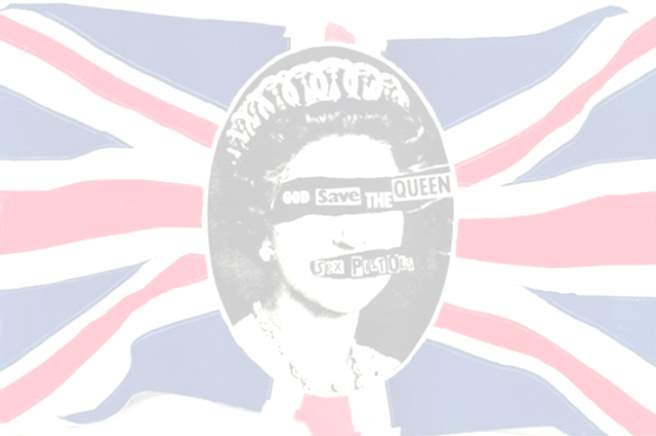
The Sex Pistols was a British punk rock band from London. It was formed in 1975 and is known to be one of the initiators of the punk movement in the UK.
The quartet was formed by Johnny Rotten as singer (his real name being Lydon), Steve Jones on guitar, Paul Cook on drums and Glen Matlock on bass. The latter was replaced by Sid Vicious in 1977. The Sex Pistols were born from former members of the group The Strand.
The name of the band came from an idea of McLaren, he said that the word “Sex” had to be part of the name. “Pistols” was added by idea association, and many people were shocked by the complete name. Lydon said that the word “Sex” had never been used in that blatant way and to put it in a band name was very funny. He thought that it was perfect to offend old ladies.[6]
Despite a short three-years career comprising only one recorded studio album, “Never Mind the Bollocks, Here’s the Sex Pistols” and four singles, the Sex Pistols are described by many as the ultimate punk rock band.
The band was born while progressive rock (like Pink Floyd) and pop (Elton John) are the most dominant musical genres in the mid-1970s. The many controversies, which both fascinated and shocked England, have often concealed the music of the Sex Pistols.
The 1977 single “God Save the Queen” was seen as an attack on the monarchy and British nationalism. Concerts often, on a recurring basis, attracted problems between authorities and organizers, with the public becoming violent. This song is now well known thanks to its promotional poster.
In January 1978, after an eventful tour in the United States, Johnny Rotten left the group, announcing eventually causing the band’s dissolution. For the next few months, the remaining three members recorded several songs for Julien Temple’s film, “The Great Rock ‘n’ Roll Swindle”. A “fable” according to Temple in which Malcolm McLaren mocks the media who have criticized him so much for only being there for the money.
Sid Vicious was a heroin addict. In 1978, he beat to death his girlfriend Nancy Spungen and he spent some time in prison. He came out on bail, and celebrated his release with his new girlfriend, his mother and a few guests.
A few months later in New York on the morning of February 2, 1979, his mother found him dead in bed from an overdose. While he was more or less undergoing rehab, Sid Vicious that night injected several times with fairly pure heroin, the last was fatal.
In 1996, Lydon, Cook, Matlock and Jones met again, and toured from June to December 1996. The band also began touring in 2002, 2003, 2007 and 2008.
1980s
Introduction to the music of the 1980s
Popular music of the 80s was built on the post-punk and new wave movements, mixing different inspirations from British or Indian and Jamaican music and what is now known as world music. In this period, music explored new ways to produce music with new technology in the electronic music like the synthpop.
During the first years of the decade, there was a considerable meeting of rock and commercial popular music, we could see it with famous bands, like UB40, they had great success in the singles chart.
Thanks to the advent of the video, British bands were able to make themselves known in America, as the Beatles did before them. Nevertheless, by the end of the decade, numerous new forms of music clearly appeared, like Hip Hop and House music. But one thing did not change at all, pop artists still dominated the single charts. The rise of Indie Rock tried to respond to this domination.
A change had taken place that gave the artists more creative freedom and they became less controlled by the record labels. Also emphasized was the importance of new local scenes like “Madchester” in Manchester.
Madchester
The term Madchester (word game which combines mad and the name of the city of Manchester) appears for the first time with the Happy Mondays who baptized one of their records Madchester Rave On.
Madchester was a musical movement that was very successful in the late 1980s in England. “The Stone Roses” and “Happy Mondays” are the most prominent representatives of this musical fashion and enjoyed a great media exposure in Britain in the years 1989-1990.
At the root of this success, was a vibrant underground music scene in the North of England, where House music from North America gained a foothold with the Mancunian audience.
All the characteristics have captured the attention of the press and the music industry. Among the most representative characteristics of this period there are the raves, the way of dressing and the drugs.
Basically, Baggy was a word that described a rather indie psychedelic music. In parallel to the music, this word is given to a way of dressing. Baggy jeans rub shoulders with cool, tie-dyed casual tops, and the general 1960s style became fashionable again in Manchester, we can give the example of the fishing hat worn by drummer, Reni, from the band Stone Roses.
Raves and drugs were often linked, sometimes for the better but also for the worse. There were several drugs that ran the clubs and Madchester in general, such as MDMA or BZP (recreational drug with euphoriant and stimulant properties), they are popularly called party drugs. The most popular drug during the 80s was MDMA which was a party drug like the others I cited.[7] The raves took place in all kinds of places, sometimes squatted as unused warehouses or even aircraft hangars.
Because of these squats, anti-rave raids were organized against the rave scene. These actions of the police forces were partly due to the attention of the media and also to the undesirable effects that hit certain participants of these parties.
The label Madchester then designated groups that had in common their geographical origin (Manchester) and their taste for the mix of different musical styles (including rock and house). While covering a broad range of styles, these musicians shared the same taste for psychedelic arrangements. This musical current also leads to a fashion trend in the early 90s.
The Stone Roses
The Stones Rose were a band that belongs to the alternative rock genre and the baggy “movement”. They formed in Manchester in 1983 and were part of the pioneering groups of the Madchester movement, which was active in the late 80s and early 90s. The main members of the band were Ian Broen, guitarist John Squire, bassist Mani and drummer Reni.
Their concerts began in the first half of the decade, the first in London at the Moonlight Club at an anti-heroin concert. The group received several management offers and the small concerts have quickly followed. Several managers worked with the group, the best example being that of Howard Jones, former manager of The Haçienda (the scene/nightclub that represented the Madchester movement).
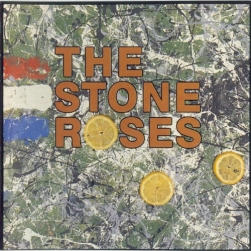
Their first album was released in 1989 and was a decisive success for the group. The group was acclaimed by the critics and gained widespread exposure in the media. It is interesting to know that he cover of the album was made by John Squire and was inspired by the work of Jackson Pollock. The lemons and three colors of the French flag directly refer to the song “Bye Bye Badman”.[8]
It is at this time that the group wanted to take advantage of its success to re-sign with a big label. Their old record company did not let them go away easily, and a legal battle began. This battle ended with the band’s signing at Geffen Records in 1991.
The Stone Roses then released their second album, Second Coming, which received mixed reviews in 1994. After that the group quickly dissolved, with Reni the first to leave in 1995, followed by Squire in 1996. The rest of the group dissolved in the same year.
Following media rumours the group called a press conference in 2011 to announce that there would be a tour in 2012 with two shows in Heaton Park, Manchester.[9] The rumors again it was said that they had recorded at least three or four songs. In 2016, they released their first new content for two decades.
Although the group was more publicized in the 90’s, they were a group that shaped the late 80s and dominated youth culture into the early 90s. The music scene that they were part of altered the culture and fed directly into Britpop and the Indie movements which followed.
1990s
Introduction to the music of the 1990s
Popular music of the 90s was growing and diversifying. Boy bands and Girl bands dominate the single charts. British music has known a period more than successful, the rise of world music, like Indian music, had revived the popularity of folk music. Electronic rock bands started to become known.
The alternative rock coming straight from Madchester produced dream pop, indie pop and post rock. All this movement has led to the heyday of Britpop groups like Oasis or Blur.
Following this period, there were several post-Britpop bands that made themselves known, such as Radiohead.
Britpop
Britpop, which appeared in the mid-90s, is a British musical and cultural movement. It focused on “Britishness” and produced a more catchy alternative rock. This is partly because of the popularity of darker themes in the lyrics of American grunge music and the shoegazing music scene in the United Kingdom.
Several internationally known groups are part of this movement, such as Oasis, Blur Suede and Pulp. These groups are known as the “big four” of the Britpop.
It is generally considered that the Britpop movement took place between 1993 and 1997. The years 1994-1995 remain without doubt the most popular years of this period thanks to the “chart battle” between Blur and Oasis. It is nicknamed “The Battle of Britpop”, because of being the epicentre of the movement.
Although Britpop is seen as a marketing tool, and more of a cultural moment than a musical style or genre, the groups in the movement have conventions and influences in common. Britpop bands present elements of 60s British pop music, 70s glam rock and punk rock, and 80s indie pop in their music. These influences are noticeable in their attitude and the way they dress. Specific influences vary: Blur and Oasis were inspired by The Kinks and The Beatles. Anyway, Britpop artists have a penchant for British pop songs of the past and for re-cycling past pop history.
We can say that the alternative rock bands of the independent scene of the 80s and the early 90s were the direct ancestors of the Britpop movement. For example, the influence of the Smiths is common to the majority of Britpop artists.
Madchester stage groups such as the Stone Roses or even Inspiral Carpets, for whom Noel Gallagher of Oasis had worked as a roadie (equipment manager) during the Madchester years, were direct roots of the Britpop, as their emphasis on good times and catchy songs offered alternative to the shoegazing music represented by “Ride” (based in England) and grunge music represented by “Nirvana” (based in America).
Oasis
Oasis were one of the most successful British bands during the 90s and early 2000s. They were particularly popular between 1994 and 1998 (often called Oasismania) during which the band attracted much of the attention of the public and the press, being one of the pioneers of the Britpop movement.
In the documentary Supersonic (name of the first song of their first album) we can see that the real breakthrough comes with the success of Live Forever (3rd song of their first album) in the UK: the title reaches the Top 10 and remains one year in the ranking of best sales.
Their debut album was released in late August 1994: with 150,000 copies sold in three days, “Definitely Maybe” became the first album which sold fastest in British musical history and went straight to the top of the charts. Today, the sales are estimated to 2.5 million[10] copies in the United Kingdom and more than 7 million worldwide.

The release of the single Cigarettes & Alcohol, fourth and final excerpt from Definitely Maybe, in October and his seventh place on the charts just confirm the growing popularity of the band.[11]
The band said they were mostly influenced by John Lennon and the Beatles (the band is also known for its psychedelic revival of I Am the Walrus). But it also cite many other groups and artists such as the Sex Pistols, The Rolling Stones or The Real People (a group that helps Oasis in his early days to write lyrics and music).
Manchester bands like Joy Division or The Stone Roses have also greatly influenced Oasis. The Stone Roses had inspired them in the art of the stage in addition to the style of music.
The band’s musical style is characterized by heavy and powerful chords (the distortion is omnipresent in many of the band’s titles), while remaining very energetic and melodious. Their music is made up of simple and sustained rhythms, and by a copious use of other effects made with pedals for guitar like the Wah-wah (resonance frequency of a modulated sound that sounds like a “wow”). The band is also often related to rock or psychedelic pop because of this particular sound.
Many bands and artists have cited Oasis as an influence or inspiration, among these groups there are the Arctic Monkeys, The Coral, Sum 41, The Killers or even Coldplay, which proves that the band influenced quite recent bands.
2000s
Introduction to the music of the 2000s
Popular music in the 2000s maintains its expansion and develops new styles and genres. The advent of talent competitions like “X-factor” became a great representation of pop music. Soul maintained its popularity and even expanded its notoriety with artists like Joss Stone and Adele.
Meanwhile a new movement of singers/composers led by Amy Winehouse was born. New forms of dance music have appeared, such as dubstep. Garage rock and post-punk have a regain of popularity. These genres, mixed with electronic music, producing new rave (sort of disco music that responds to indie rock).
At that time, Coldplay is considered the most commercially successful British rock act of the decade.
Post-Britpop
Post-Britpop is a musical sub-genre of British alternative rock, initiated by bands that emerged in the late 1990s and early 2000s after the Britpop commercial spike[12], inspired by bands such as Pulp, Oasis and Blur but without words directly directed to British culture and with a few more elements of American and independent rock, and experimental music.
The post-Britpop bands, previously bands in other genres, but popularized after the decline of the Britpop, such as Radiohead and The Verve, and new bands like Stereophonics, Feeder and notably
Coldplay, are more successful internationally than most Britpop groups that preceded them, and thus became the most popular groups of the late 1990s and early 2000s.
Most Post-Britpop bands do not want to consider themselves as Britpop bands during the time they produce songs derived from it.[13] The music of these bands makes use of pieces of guitar often mixed with elements of British traditional rock (or British trad rock) in particular that of Beatles, Rolling Stones and Small Faces which mingle with elements of American music.
Post-Britpop bands also make use of specific sound elements derived from British pop and rock music of the 1970s. Popularized throughout the United Kingdom, the themes of their music focus much less on the British, English and London daily, and are more introspective than they were in the Britpop during its heyday. This, along with an attempt to seduce the public and the US trade press, is helping a number of bands to achieve international success. They represent the image of the rock star embodied by an ordinary person (boy-next-door). Their melodic music is considered by some as “bland”.
These groups are followed by other ones sharing the same musical aspects, like Snow Patrol (from Northern Ireland), Elbow, Starsailor, Doves or Keane.[14]
The most profitable band in the field is Coldplay, whose first album, Parachutes (2000), repeatedly certified platinum disc helped them to become internationally popular. Two years later they release their second album, A Rush of Blood to the Head, which has been well received by critics and the public.
Bands like Coldplay, Starsailor and Elbow, whose lyrics and tempo are introspective are negatively labeled, in the early 2000s, as “fades” and “uninteresting”, while garage rock or post-punk revival bands, such as “The Libertines” or “The Cannibals”, which emerged during this period are well received by the specialized press. However, some of these groups, particularly Travis, Stereophonics and Coldplay, continue to record and achieve commercial success in early 2000s.
The Post-Britpop term extends to include groups that emerged in the early 2000s as Razorlight, Arctic Monkeys and Bloc Party. These bands are considered as the “second wave of the Britpop”.
Coldplay
Coldplay are a British pop rock band from London who were part of the Post-Britpop movement. They were formed in 1996 by singer-songwriter Chris Martin and guitarist Jon Buckland. In 1998, the group was born under its final name and released its first two EPs. They then took the opportunity to sign to the Parlophone label.
With seven albums, including the latest titled A Head Full of Dreams, Coldplay is one of the biggest hit groups of the new millennium with nearly 60 million albums sold (figure before A Head Full of Dreams)[15]. This band has been criticized many times but regularly rewarded, the band won eight Brit Awards, seven Grammy Awards, six Q Awards and five NME Awards. They were also elected in December 2009, fourth best artist of the 2000s by readers of Rolling Stone magazine (U.S.).
Chris Martin and Jonny Buckland met in September 1996 at University College London. The two friends, passionate about music, spent the rest of the academic year planning a group, eventually called Pectoralz. They were soon joined by Guy Berryman, who is studying at the same university. The group was formed in 1997. A friend of Chris Martin, Phil Harvey, was hired as a manager. On the 8th January 1998, they recruit a fourth member, Will Champion who becomes the drummer when he never touched a battery of his life. Barely engaged, Will Champion organizes the band’s first concert at the Laurel Tree in London. For this concert given on the 16th of January 1998, they called themselves temporarily Starfish.[16]
The name of Coldplay was proposed by Tim Crompton, a common university friend who first used this name for his own group, before abandoning it, finding it too depressing. Chris Martin and his acolytes found this name perfect and decided to keep it.
June 2000 really marked the beginning of Coldplay: the single Yellow ranks fourth in the British charts and the general public discovered the band. The album Parachutes was released on the 10th of July 2000 and is the first album sales in the UK as soon as it is released. The sales of the album estimated at 40,000 by Parlophone during the launch then reached 1.6 million copies in the United Kingdom at the end of the year 2000; then eight million copies finally in the world a few years later.
The album met with great success in Europe and Parachutes released in November 2000 in the United States where it also met with success. French criticism is laudatory too. Ironically, in 2006, Chris Martin says “We know that’s terrible music, and we always try to think about what we can do next”.[17]
Coldplay singer Chris Martin defines the band’s musical style as “soft rock”. It counts a large number of main influences with U2, R.E.M. and Muse in mind.
They released seven albums between 2000 and 2015 :
♪ Their first album, “Parachutes”, is described as melodic pop, with riffs of guitars and distorted percussion. Critics describe it as possessing “an exquisite darkness”. This style of alternative rock quickly brought to comparisons with U2, Oasis, Radiohead or Travis. The band recognized the latter had a major influence on its first album.
♪ The second album, “A Rush of Blood In The Head”, was inspired inspired by with artists like Kate Bush, George Harrison or Muse. The songs in this album are considered to contain “gorgeous melodies breaking the heart”.

♪ “X & Y”, the third instalment, was described by Chris Martin as revealing his doubts, fears, hopes and loves and is mainly influenced by Johnny Cash and Kraftwerk.
♪ In the fourth album, “Viva la Vida or Death” and all his friends, the musical style is oriented towards rock art with influences more marked by Blur or Arcade Fire.
♪ The fifth album, “Mylo Xyloto”, moves away from the original style of Coldplay, and turns towards pop music and electro rock.
♪ The sixth album, “Ghost Stories” is also anchored in this electronic pop style, like the song Midnight, entirely composed with a computer.
♪ Finally, the seventh and last one, “A Head Full Of Dreams”, always has tones still of this stream. More place is left to keyboards, especially in the singles Everglow or Up and Up.
Thanks to their success in the world of music, their work has been rewarded with several awards, since 2000 Coldplay has, for example, won 9 Brit Awards, 7 Grammy Awards and 3 NRJ Music
Awards, for a total of 85 awards for 252 nominations. These numerous awards highlight the group’s great success.[18]
2010s
Introduction to the music of the 2010s
For British music, the 2010s are more “open-minded”. Almost all genres of music are well represented. Rock, soul/blues and pop are very present in the charts. I could cite Sam Smith for soul music which had two of his singles (“Stay with Me” and “Money on My Mind”) in first position of the singles chart, “Arctic Monkeys” who are particularly known for Rock music and of course Ed Sheeran for pop, rock and soul music.
Pop is, of course, very popular with young people but it is not the only music genre. The artists have diversified in their compositions, their inspirations come from a lot sources and different artists.
An artist in particular represents this new generation very well, Ed Sheeran.
New generation
The 2010s in the UK are represented by a multitude of kinds of music. The music genres have expanded themselves. Today we can listen to everything: Rock (alternative, psychedelic, blues, etc.), Jazz, Pop, Techno, Rap, etc. There is something for every taste.
As if to pay tribute to its history, rock is back in force today with bands like Arctic Monkeys. Their music takes the genres of rock that were famous from the 70’s to the 90’s, psychedelic rock, indie rock, post-punk or alternative. This is not the only group to represent the Rock of this decade, there are many others like Muse, Radiohead or Nothing But Thieves.
Rock is of course still a very popular genre, but pop is also represented by artists like Robbie Williams and James Blunt. The fact is that nowadays it is difficult to classify music in a box, in a style. The artists we know do more than one style. They grow their art in many genres. That is why we hear pop-rock, soul-R&B, folk-rock or even folk-pop, genres used by Ed Sheeran for example.
The artists have evolved a lot and the music evolved with them, but that does not stop them from taking some inspiration from the past years.
Ed Sheeran
Ed Sheeran is a musician born in Halifax, Yorkshire. The musical genres he particularly likes are pop/folk-pop, folk, rock and grime. He masters several instruments: the guitar (acoustic and electric), the drums, the violin, the cello and the piano. It is thanks to his love and his talents for music that he is where he is now. Like any musician, his musical style was influenced when he was young.
He says in an interview that his earliest music memories were the records of Roberta Joan “Joni” Mitchell, Bob Dylan and Elton John.[19] According to Ed, it was Van Morisson’s album Irish heartbeat who introduced him to music.
When he was young, his father took him to live concerts, such as those of Bob Dylan, Paul McCartney or Eric Clapton. He says that it is thanks to this musician that he started learning how to play the guitar.
By reading these kinds of interview that we see that Edward has been influenced in his music by great classics of music. He names The Beatles, Nizlopi and even Eminem among his greatest musical influences. He says singing The Marshall Mathers LP (an Eminem Album) has helped him get rid of his stuttering.[20] We can therefore conclude that his influences and inspirations are very varied.
He expresses his different musical backgrounds with various songs ranging from pop, like Shape of You for example, to soul, with songs like Make It Rain (used in the serie Sons of Anarchy).
Ed Sheeran represents the artists who does not only content themselves with staying in the business with pop nonsense, without knowing how to diversify.
Nevertheless he remains a great romantic in his songs, the themes that predominate in his songs are love and nostalgia. It may seem a bit soppy at first, actually it is not to please everyone. Fortunately, thanks to its diversification in musical genres, it is very likely that there is at least one of his music you like.
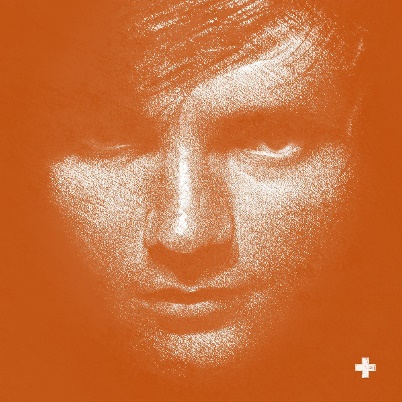
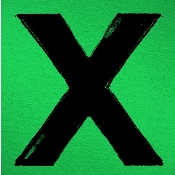

Conclusion
With the research I have done, we can see that the music has not stopped evolving since the 60s. We started from Beatles rock to Ed Sheeran’s folk/pop. Contrary to what one might think the “old music” have not disappeared at all, they have become “classics” and by becoming classics they have inspired a wide range of varied artists. To take a famous example, the Beatles, they have inspired bands even several generations after the end of their careers and it is continuing nowadays. Several internationally popular artists portrayed them as references and big great inspirations, among them Ed Sheeran or even Nirvana (although the style of music is not the same at all).
Today’s music is made of references to bands like Beatles and these references will be present forever.
The evolution of music has nothing to do with references, it is the consequence of the advancement of technology and the growing creativity of artists. It can be noted that thanks to this evolution, all genres are represented and even new ones have appeared, rap music for example. Previously some styles were over-represented as progressive rock and punk music for the 70s or psychedelic rock for the 80s, but today all styles are represented and with bands known to the general public even if everyone do not like all genres. There is something for every taste and it is thanks to the evolution of the music industry.
It can also be noted that music has always reflected a way of thinking and has been a mirror of a society if not a generation, to which the artists belonged to. Today it is different, many artists are emerging and not always for good reasons, commercial reasons. It is true that in the past there were commercial artists too, but today, thanks to technology, anyone who has a little time can achieve a result with his computer. Often, these kinds of productions are not very qualitative and have a hard time getting popular and being recognized by music professionals.
In my opinion, the evolution of music has good and bad aspects but the good ones manage to eclipse the bad ones. We live in a time when any enthusiast has the opportunity to concretize his ideas and give life to his projects if he gives himself the means and if he has the motivation and all this without breaking the bank. It is thanks to these enthusiasts that music is continuing evolving.
Music gets richer and richer as budding musicians get new ideas, that is all the music needs. It is these new ideas that, over time, have evolved music.
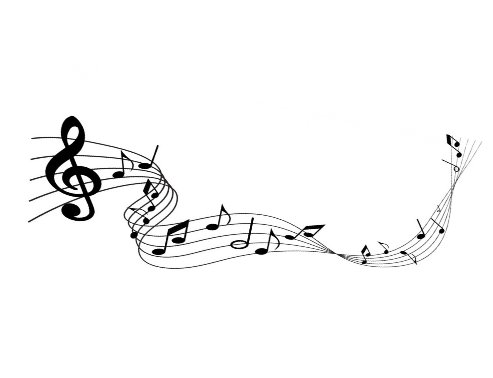
My experience
For many years I listened to music of every styles and from every generation and most of my favourite bands are from the United Kingdom. It was such an evidence for me to base my project on music because in addition to my love of music, I was in the country which have seen famous musicians born. Among these musicians I could cite Pink Floyd, The Beatles, Gorillaz or Led Zeppelin who are classics for me. Thanks to this passion and this project we were asked to do I was able to gather information about groups that I already knew, to know more about them, and also to discover artists I had heard less about.
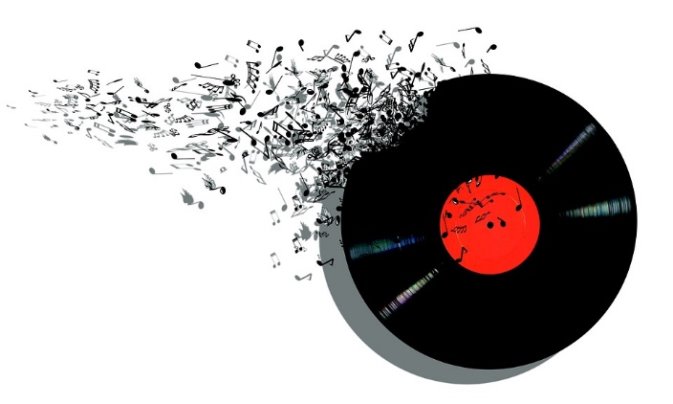
All sources
Page 3
* SHKLOVSKY Viktor, “Art as technique”, 1917
Page 4 :
*The Beatles website, consulted on the 28th of March 2018
http://www.thebeatles.com/news/beatles-record-breaking-us-chart-invasion
*PALMER Tony, “The Beatles’ bull’s-eye” in The Observer, 17th November 1968
(article collected in: The Observer: Book of Rock & Pop, several authors, Editor: Carl Wilkinson, 2007)
Page 5 :
*ROBB John, Punk Rock: An Oral History, London, Ebury Press, 2006
* SAVAGE Jon, England’s Dreaming,London, Faber & Faber, 2011
Page 6 :
*SAVAGE Jon, England’s Dreaming,London, Faber & Faber, 2011
page 8 :
*HASLAM Dave, Manchester England (page 161), London, Fourth Estate Ltd, 2000
*PEARCE Edward, http://www.songfacts.com/, consulted on the 28th of March 2018
http://www.songfacts.com/detail.php?id=8320
*BBC News, consulted on the 17th of March 2018
http://www.bbc.co.uk/news/entertainment-arts-15348374
Page 10 :
*HARRIS John, Britpop!: Cool Britannia and the Spectacular Demise of English Rock, Boston (Massachusetts), Da Capo Press, 2004
*WHITECROSS Mat, DVD: Supersonic, 2016
Page 11 :
* HARRIS John, Britpop!: Cool Britannia and the Spectacular Demise of English Rock (page 178), Boston (Massachusetts), Da Capo Press, 2004
*BUCKLEY Peter, The rough guide to Rock (pages 333, 337 and 1 003-1 004), London, Rough Guides, 2003
Page 12 :
*PUREBREAK Charts, consulted on the 14th of March 2018
http://www.chartsinfrance.net/communaute/index.php?/topic/41045-coldplay-mylo-xyloto-3/
* ROACH Martin, Coldplay: Nobody Said it was Easy, United Kingdom, Omnibus Press, 2003
*USA Today, consulted on the 14th of March 2018
http://usatoday30.usatoday.com/life/people/2006-07-13-coldplay_x.htm
Page 13 :
*Wikipédia, pooled of multiple websites, consulted on the 4th of April 2018
https://en.wikipedia.org/wiki/List_of_awards_and_nominations_received_by_Coldplay
Page 14
*McCORMICK Neil, https://www.telegraph.co.uk/, Ed Sheeran: ‘I haven’t got used to the screams’, published on the 3rd of August 2011 https://www.telegraph.co.uk/culture/music/rockandpopfeatures/8679492/Ed-Sheeran-I-havent-got-used-to-the-screams.html, consulted on the 21st of April 2018
* DOYLE Patrick, https://www.rollingstone.com/,
Ed Sheeran: Up All Night With Pop’s Hardcore Troubadour, published on the 7th of March 2017
https://www.rollingstone.com/music/features/ed-sheeran-on-hard-drinking-nights-taylor-swift-true-love-w470599, consulted on the 21st of April 2018
Pictures Sources
*Title picture :
http://lunchtimedetergent.ga/terewohn/page-2076.php
*Beatles, Abbey Road :
http://www.classicenglishstyle.com/the-beatles-abbey-road-pedestrian-crossing/
*Sex Pistols, God Save The Queen :
http://beat-vreemdeling.blogspot.co.uk/2012/04/god-save-queen-again-sex-pistols.html
*The Stone Roses :
https://www.allmusic.com/album/the-stone-roses-mw0000653335
*Oasis, cigarettes and alcohol
https://www.ebay.co.uk/itm/Oasis-Cigarettes-And-Alcohol-Poster/282882491489?hash=item41dd1c4461:g:WgQAAOSwnipWZGF~
*Coldplay, viva la vida:
https://en.wikipedia.org/wiki/Viva_la_Vida#/media/File:Coldplay_-_Viva_la_Vida.jpg
*Ed Sheeran:
+ : https://fanart.tv/artist/b8a7c51f-362c-4dcb-a259-bc6e0095f0a6/sheeran-ed/
Divide : https://genius.com/albums/Ed-sheeran/Divide
*Conclusion : https://www.decosoon.com/fr/sticker-voiture-frise/18210-stickers-notes-de-musique.html
*My Experience :
https://pixabay.com/p-1428660/?no_redirect
[1]SHKLOVSKY Viktor, “Art as technique”, 1917
[2] http://www.thebeatles.com/ (completed source at the end)
[3] PALMER Tony, “The Beatles’ bull’s-eye” in The Observer, 17th November 1968
[4] ROBB John, Punk Rock: An Oral History (page 1), London, Ebury Press, 2006
[5] ROBB John, Punk Rock: An Oral History (page 5), London, Ebury Press, 2006
[6] SAVAGE Jon, England’s Dreaming (page 129), London, Faber & Faber, 2011
[7] HASLAM Dave, Manchester England (page 161), London, Fourth Estate Ltd, 2000
[8] http://www.songfacts.com/ (completed source at the end)
[9] http://www.bbc.co.uk/ (Complete source at the end)
[10] HARRIS John, Britpop!: Cool Britannia and the Spectacular Demise of English Rock (page 178), Boston (Massachusetts), Da Capo Press, 2004
[11] WHITECROSS Mat, Supersonic, 2016
[12] HARRIS John, Britpop!: Cool Britannia and the Spectacular Demise of English Rock (pages 369-370), Boston (Massachusetts), Da Capo Press, 2004
[13] HARRIS John, Britpop!: Cool Britannia and the Spectacular Demise of English Rock (pages 369-370), Boston (Massachusetts), Da Capo Press, 2004
[14] BUCKLEY Peter, The rough guide to Rock (pages 333, 337 and 1 003-1 004), London, Rough Guides, 2003
[15] PUREBREAK Charts, http://www.chartsinfrance.net/ (Complete source at the end)
[16] ROACH Martin, Coldplay: Nobody Said it was Easy, United Kingdom, Omnibus Press, 2003
[17] USA Today, usatoday30.usatoday.com (Complete source at the end)
[19] McCORMICK Neil, Ed Sheeran: ‘I haven’t got used to the screams’,
https://www.telegraph.co.uk/, published on the 3rd of August 2011
[20] DOYLE Patrick, Ed Sheeran: Up All Night With Pop’s Hardcore Troubadour ,
https://www.rollingstone.com/, published on the 7th of March 2017
Cite This Work
To export a reference to this article please select a referencing stye below:
Related Services
View allRelated Content
All TagsContent relating to: "Music"
Music is an art form of arranging sounds, whether vocal or instrumental, in time as a form of expression. Some form of music can be seen in all known societies throughout history, making it culturally universal.
Related Articles
DMCA / Removal Request
If you are the original writer of this dissertation and no longer wish to have your work published on the UKDiss.com website then please:




